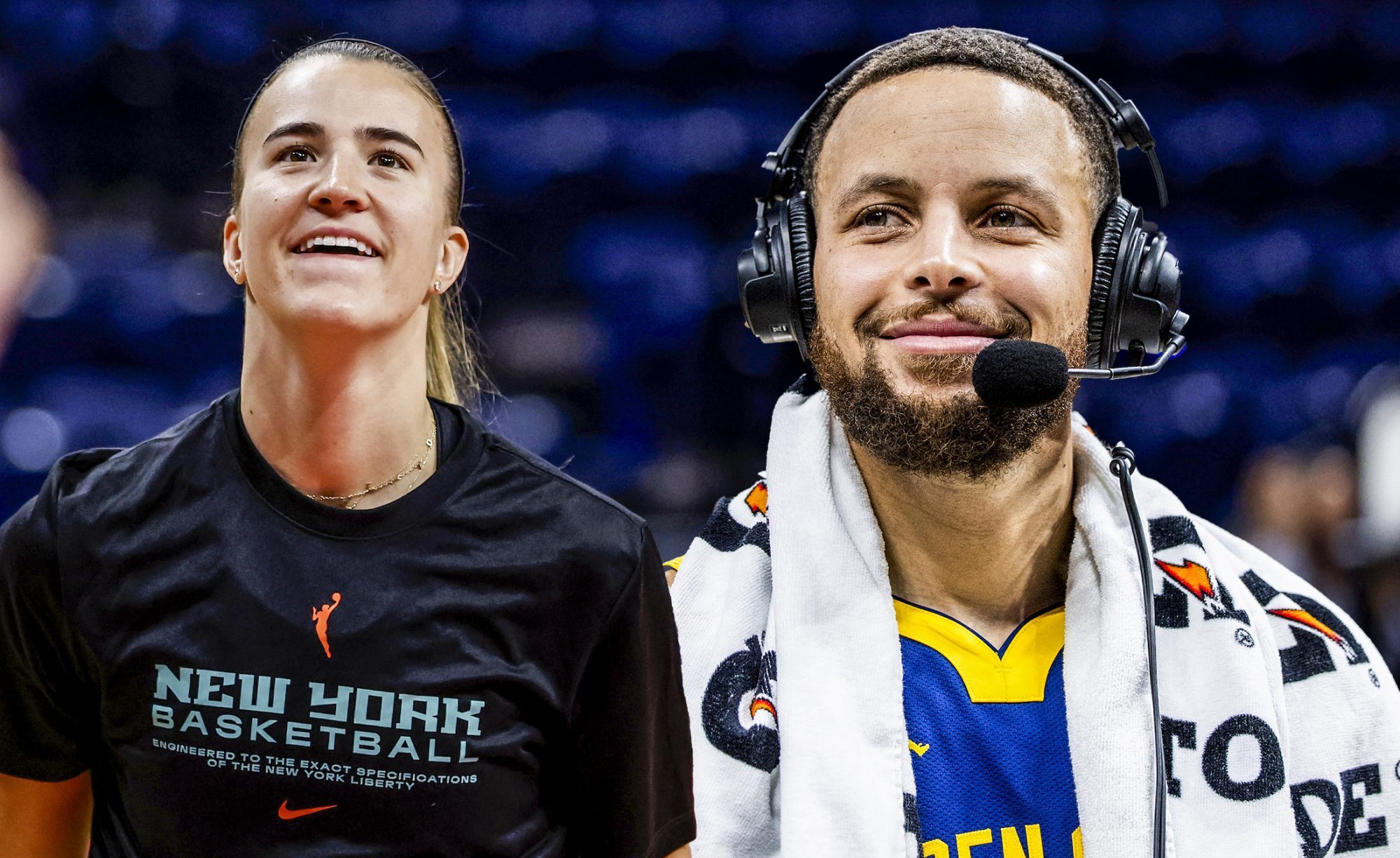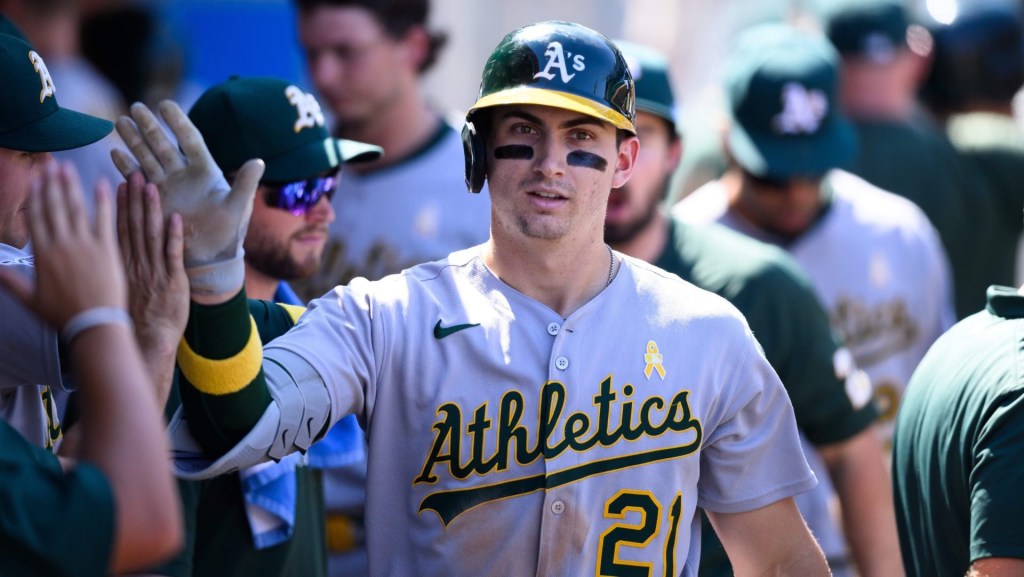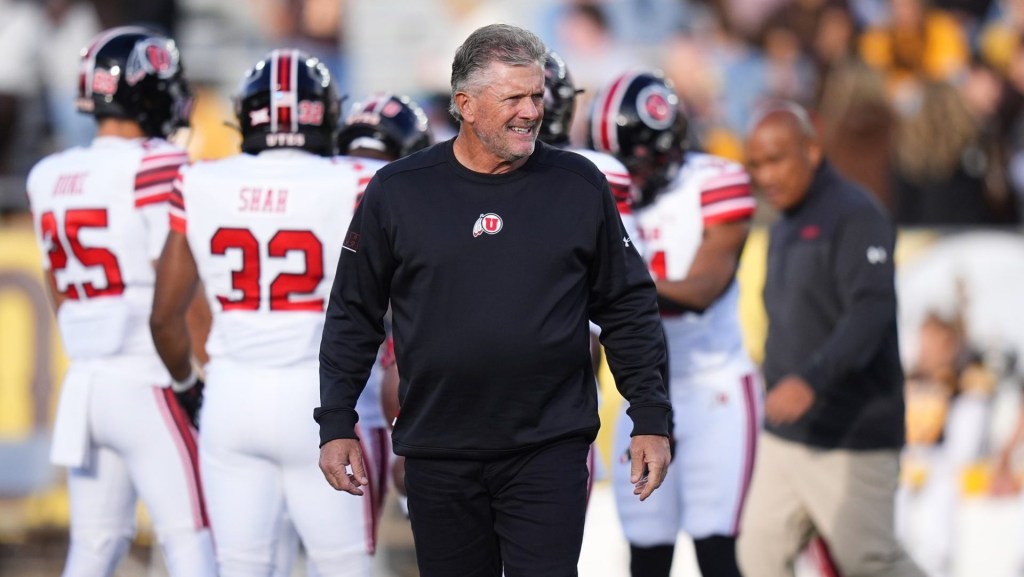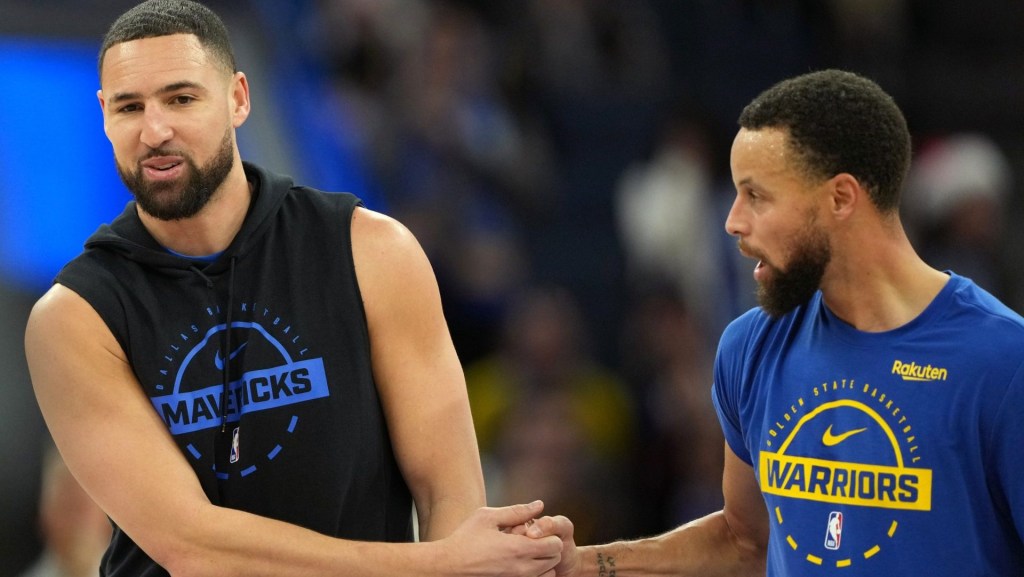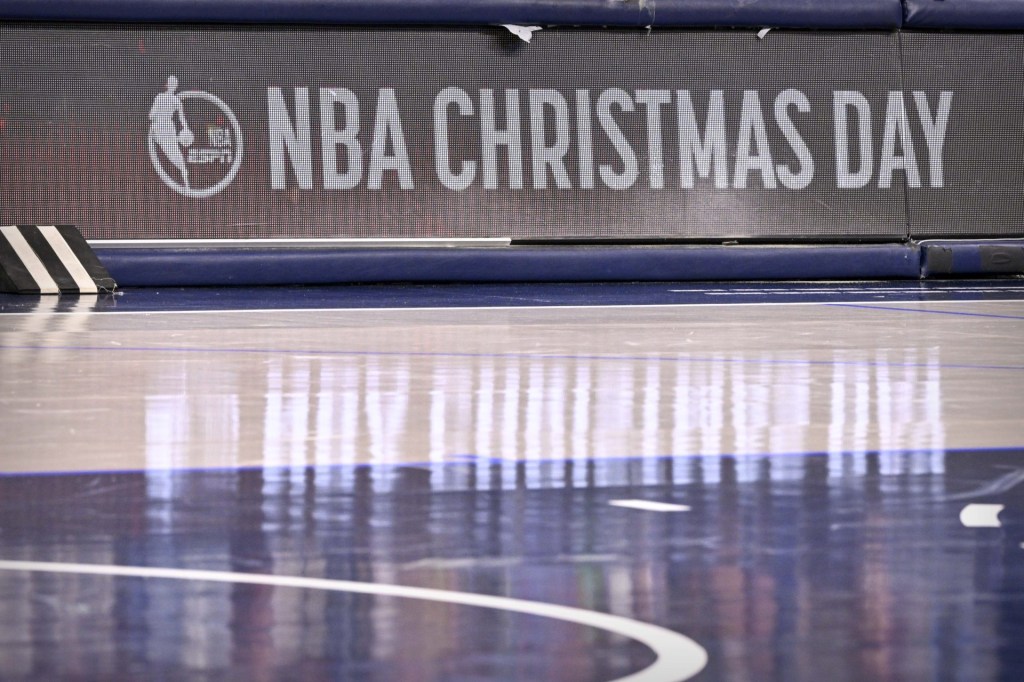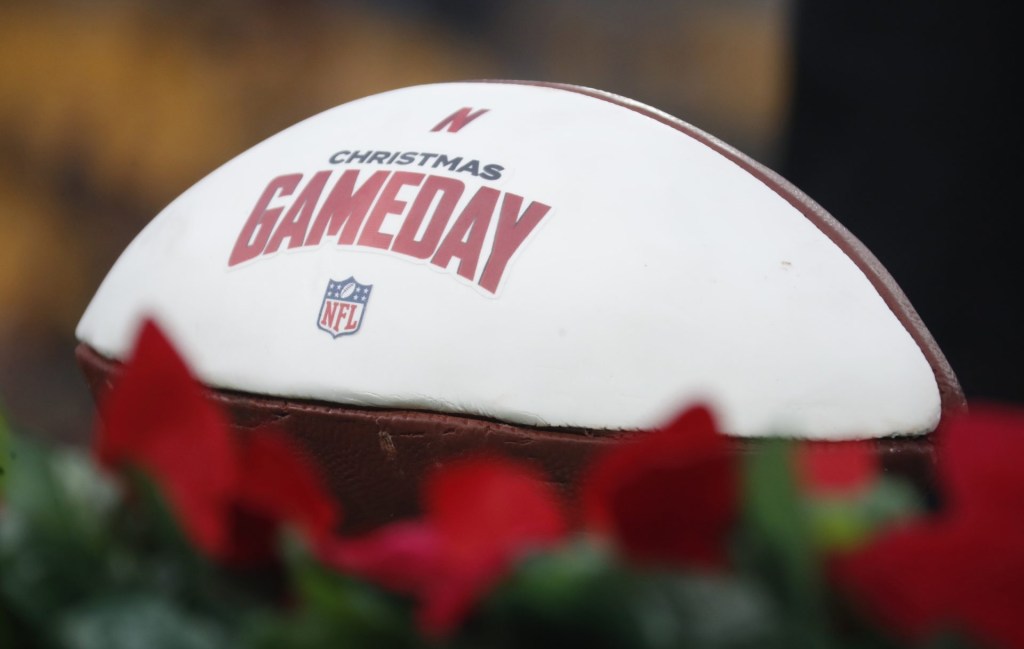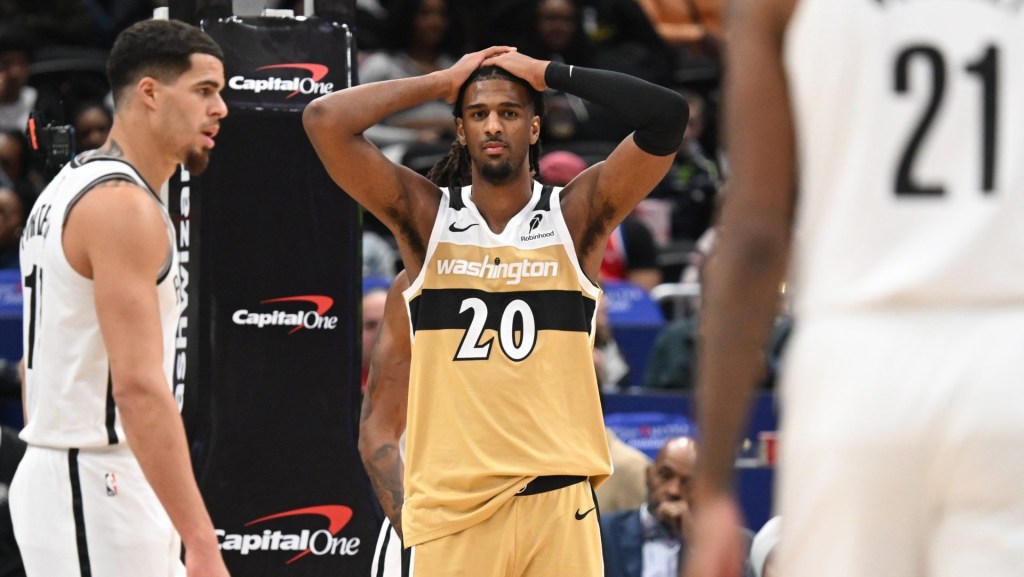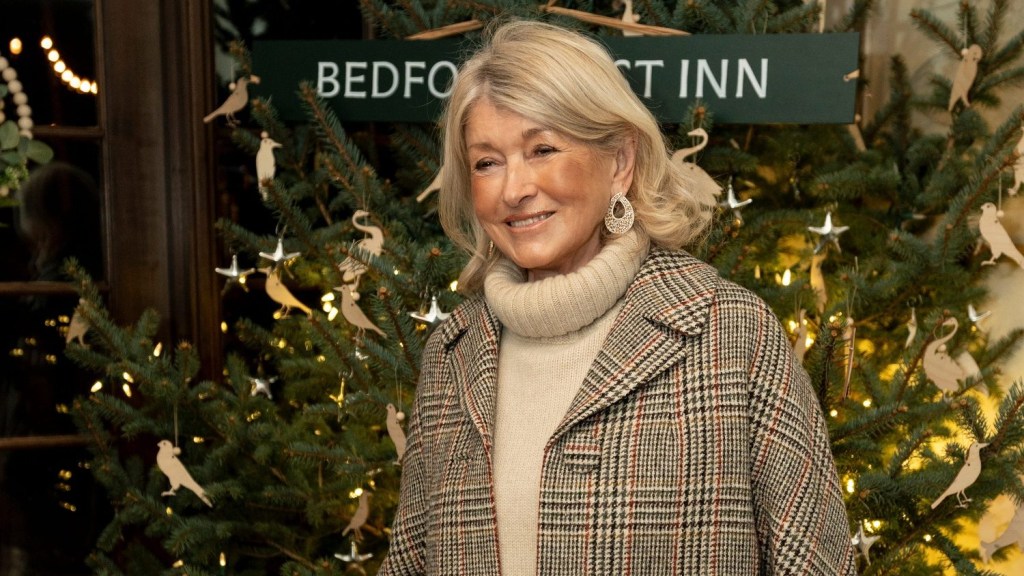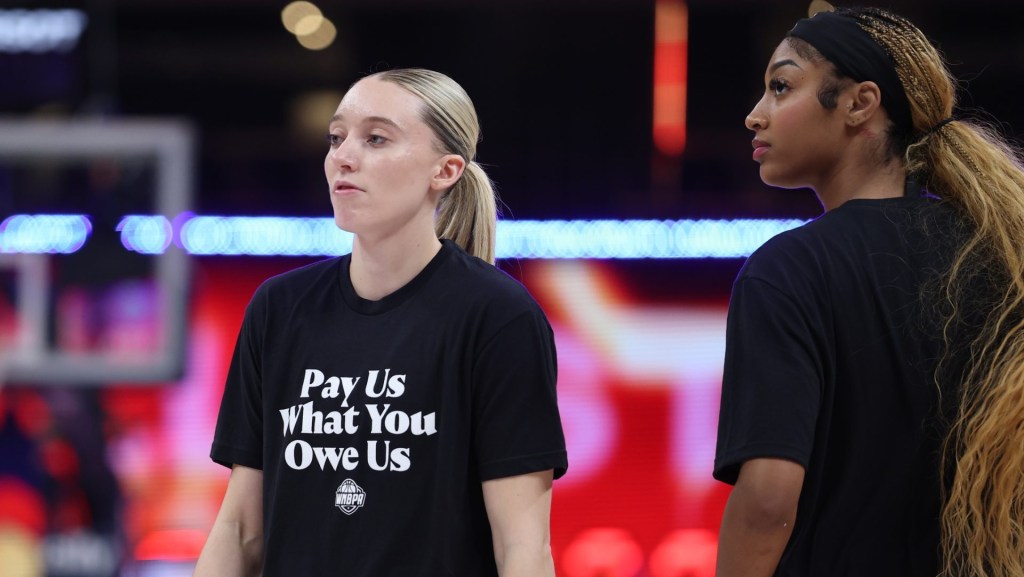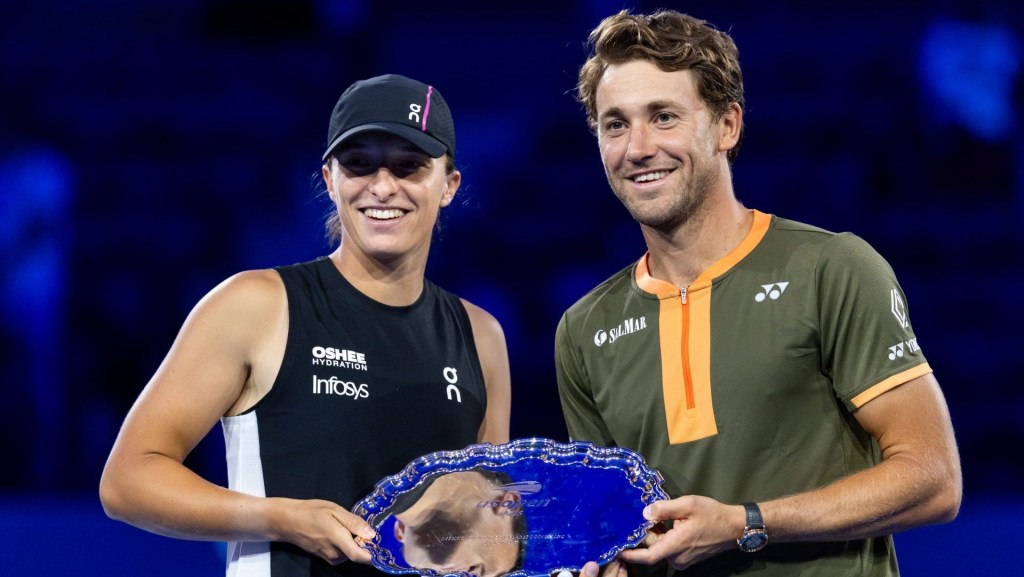On Saturday night of NBA All-Star weekend, Liberty guard Sabrina Ionescu faced off against her idol, Warriors guard Stephen Curry, in a new three-point exhibition. Ionescu went first and put up 26 points, identical to Damian Lillard’s winning score in the main competition.
The contest, which Curry narrowly won with 29 points, was the first formal head-to-head competition between an NBA and WNBA player. (Afterward, some were already calling for a Caitlin Clark-Curry showdown next year.) The WNBA is drawing its best viewership in decades, and last night’s event put one of the league’s biggest stars in front of millions more basketball fans than usual.
Back in July, Ionescu set a WNBA three-point contest record, scoring 37 out of 40 possible points. She sank 20 shots in a row to surpass Curry’s NBA-record 31 points. Ionescu called up Curry after her win, laughing and “still in shock,” as she told reporters before Saturday’s matchup. Then she jokingly challenged him to a shootout on X (formerly known as Twitter), and a few days later, Curry said on ESPN that he had to chase her record, and the two needed to decide the best three-point shooter. Cut to January, when mic’ed up before a Warriors game, Curry said that he and Ionescu should “settle this once and for all.” A few days later, the official announcement followed.
The effect was setting in early—Ionescu gained 60,000 Instagram followers ahead of the competition in the three weeks since Curry challenged her, according to data from Social Blade. She got 20,000 alone the day after the official announcement was made.
“I do think that there are folks that [will have tuned in] that have just not paid attention to the quality and the level of athleticism in the WNBA,” says Sara Gotfredson, who founded Trailblazing Sports Group to create more commercial partnerships in women’s sports.
It’s easy to draw a comparison to the “Battle of the Sexes,” a prime-time, head-to-head matchup in 1973 between two of the sport’s biggest names, one man and one woman: Bobby Riggs and Billie Jean King.
“King describes that event as a true catalyst for social change,” says Caroline Fitzgerald, founder of the women’s sports marketing and consulting firm Goals.
The tone of last night’s competition was much different thanks to five decades of Title IX. “Billie knew that was so much bigger than sport. …There was this expectation that women couldn’t compete at the highest levels,” said Danette Leighton, CEO of King’s Women’s Sports Foundation. “It’s so nice to see where we are in 2024, this mutual respect between elite athletes.”
Unlike the tennis match, Ionescu didn’t gift her opponent a piglet, as King did, a nod to Riggs’s calling himself “the No. 1 male chauvinist pig.” This contest grew out of the Bay Area ballers’ long-standing friendship rather than a sexist challenge.
Still, an event where female athletes compete in front of a national audience in prime time is important for women’s basketball—both from a cultural and business standpoint.
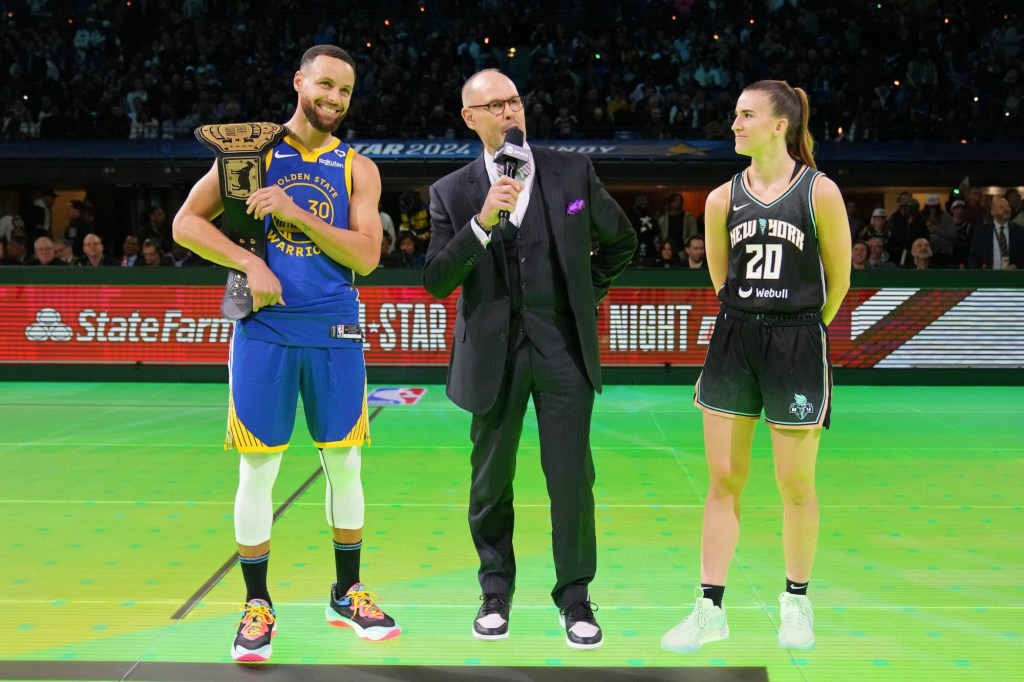
Giving the People What They Want
Fans love watching female athletes compete on a level playing field with male competitors. Take former Vanderbilt football kicker Sarah Fuller, Brown baseball player Olivia Pichardo, or former NASCAR driver Danica Patrick. When King faced Riggs in 1973, more than 30,000 people attended the match, while another 90 million viewers tuned in worldwide.
“There’s clearly something,” Fitzgerald says. “People like to see this kind of competition.”
The matchup is a perfect storm for brands, Fitzgerald says, between the story lines, competition, values of gender equity, and passionate women’s basketball viewers. WNBA fans are a great return for advertisers—ads running during the 2023 WNBA Finals were 30% more effective than they were the year before, according to data from the TV ad-tracking platform EDO, while the ’23 NBA Finals were 29% less effective than they were in ’22.
“I just think it checks every single box for a brand that’s looking to get involved or enhance their marketing strategy through partnerships in sports,” Fitzgerald says.
Certain elements of this competition made it particularly enticing for viewers and advertisers, like the two shooters’ friendship, the natural way the showdown came together, and the fact that Ionescu had Curry on her screensaver and bedroom posters growing up. “I just think that fans feel that authenticity,” Gotfredson says of how it all came together.
Another element Fitzgerald says matters: Fans on both sides had something to root for. The 26-year-old Ionescu is a newer superstar, defending her title against one of the best shooters and most popular athletes of all time.
Plus, the two competed from the same line. Ionescu was originally set to shoot from WNBA distance, which is about the same as in FIBA, but she asked to switch to the NBA line because she says that’s the range she shoots and practices from anyway.
“I think it’s important that fans that are just tuning in are realizing that she is doing the exact same thing that the men are doing,” Gotfredson says. “I think there’s equity from the get-go, and I love that about this.”
The Bottom Line
Ionescu said that she’d been asked a few times to compare the competition to the “Battle of the Sexes.”
“This is just an opportunity, and sometimes that’s all you need to be able to go out there and shut a lot of people up, but also continue to thank those people that are continuing to push for what’s right,” Ionescu said before the contest.
A few weeks before facing Riggs, King helped secure women receiving equal prize money as men at the U.S. Open. Ionescu didn’t exactly carry the future of women’s sports on her shoulders last night, but WNBA salaries are a long way from being equal to those in the NBA.
The WNBA gets $25 million annually from ESPN, and another $13 million per year from Scripps Ion, in deals running through the 2025 season. For reference, the NBA receives a combined $2.6 billion annually from Disney and Warner Bros. Discovery.
More fans lead to more attendance, viewership, and advertisers. (See: “Clarkonomics.”) All of those metrics attract a more lucrative media rights deal, which will begin in the 2026 season. And as we’re seeing with the NWSL, a record media rights deal trickles down to record player contracts.
Last night could be a bigger deal than we realize.
